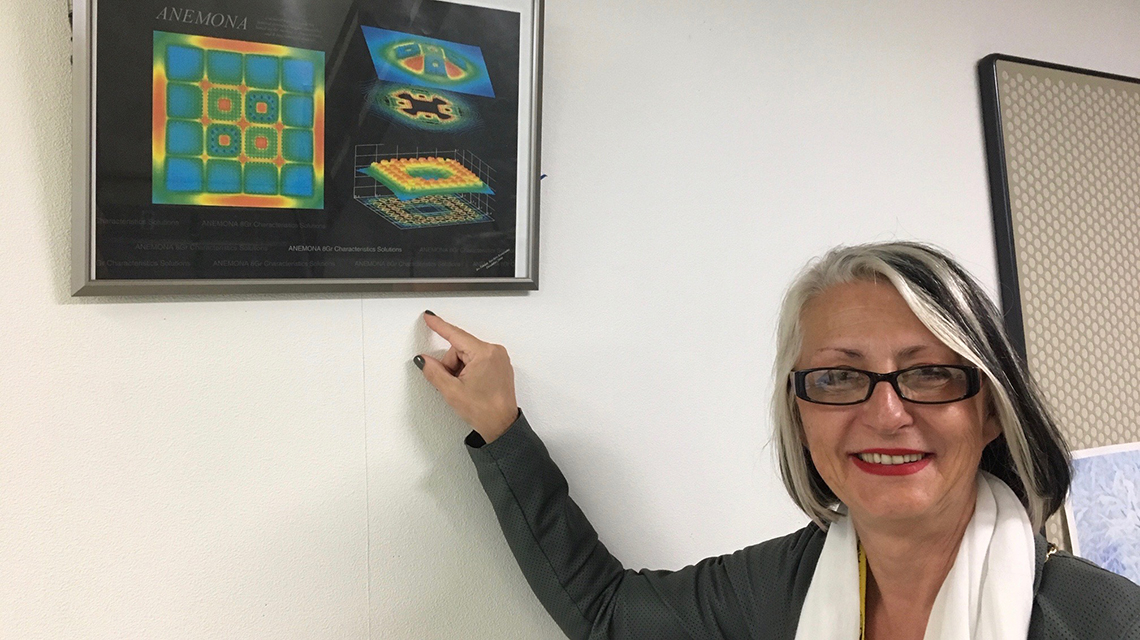Tatjana Jevremovic, a trailblazing nuclear engineer at the IAEA, has always stood out on the job — whether for helping her students embrace the challenges of life or developing a seminal neutronics code that, years later, is still used in Japan for relicensing nuclear power plants. But in an industry famous for being a man’s world, something else has also made her stand out: being a woman.
In 1996, while working as a chief engineer for Nuclear Fuel Industries Ltd in Japan, Jevremovic could be easily spotted from a distance walking with scores of strictly uniformed male colleagues at the company’s factory site near the city of Tokai-Mura. The reason: uniforms for female nuclear engineers did not exist in a company that had never had one.
“The working environment in this field is generally not as enabling for women as it could be,” Jevremovic said. “But nuclear science and technology continue to fascinate me to this day—and I would do it all over again.”
As the IAEA marks International Women’s Day on 8 March, the story of Jevremovic’s remarkable career journey, from her native Belgrade to Vienna via Japan and the United States, is both an inspiration for young women considering the nuclear field and a cautionary tale about the potential pitfalls of an industry that, despite efforts to achieve a better gender balance, remains largely dominated by men.
Science, math, learning, culture
Born in then Yugoslavia, Jevremovic from the very beginning was surrounded by science and math and a passion for learning and culture. Her mother, a professor of linguistics and French, instilled in her a drive to succeed by creating her own opportunities. Her geologist father believed math solved all problems.
“I owe my straightforwardness to him,” said Jevremovic, who joined the IAEA in 2016 and serves as Team Leader for Water Cooled Reactor Technology Development in the Department of Nuclear Energy. “He was not the most patient teacher, but I grew to love math nevertheless.”
Growing up in the Serbian capital, she was always fascinated by books, dictionaries, science magazines—anything that imparted knowledge. She wrote poems, started to paint and read voraciously. One day, when she was about 12, she came across a book called On Nuclear Energy by Donald J. Hughes and translated by Dragoslav Popovic, who later became her professor at the University of Belgrade.
“I didn’t know anything about nuclear reactors or nuclear energy—I had only a vague idea about fission,” she said. “The fact that I did not understand it is why I decided, then and there, to study nuclear engineering and chose it as my profession.”
Her parents were less enthusiastic.
Jevremovic’s father viewed nuclear engineering as a men’s field, and insisted she study geology and become a professor. Given her daughter’s painting talent, her mother thought she would make an outstanding architect.
While she appreciated their intentions, she knew what she wanted. She applied to the Faculty of Electrical Engineering at the University of Belgrade, which that year admitted 80 students. Only 13 ended up graduating, seven of them women, including Jevremovic.
“It was truly a unique generation,” said Senada Avdic, a fellow graduate. “What’s more, all of us (women) stayed in the field and went on to have successful careers as nuclear engineers and distinguished professors.”










